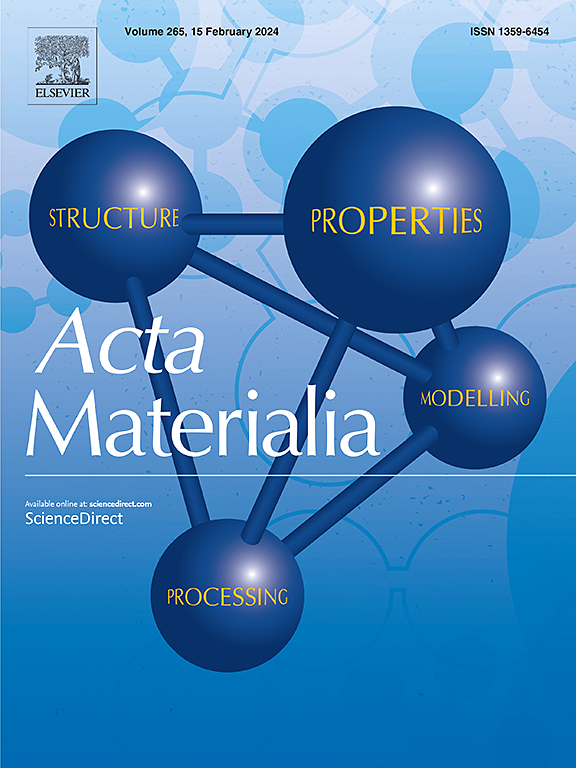Deformation twinning in a refractory high entropy alloy with B2-ordered crystal structure
IF 9.3
1区 材料科学
Q1 MATERIALS SCIENCE, MULTIDISCIPLINARY
引用次数: 0
Abstract
A B2-ordered Al16Nb10Ta5Ti33V5Zr31 refractory high entropy alloy (RHEA) was previously found to exhibit good plasticity in compression from 20 °C to 1000 °C, partially attributed to the extensive deformation twinning occurring within this temperature range. This study observed that deformation twins form almost immediately after yielding, with their density increasing as plastic strain accumulates. Microstructural and crystallographic analyses show that the B2-ordered crystal structure is retained in these twins, which form through the rotation of domains within the parent grain (matrix) about 〈110〉 or 〈112〉 axes to discrete angles that match coincidence-site lattice (CSL) relationships. Conventional shear twin formation is energetically unfavorable in this alloy under the studied conditions because this mechanism requires extensive atomic shuffling to maintain the B2 order. Twins with rotation angles of 10.10°, 13.44°, 14.65°, 16.10°, 17.86°, 20.05°, 22.84°, 26.53°, 31.59°, and 38.94° were identified and analyzed. Twins with larger rotation angles are typically observed at higher plastic strain levels. A rotational twin formation mechanism, consistent with the experimental observations, is proposed and discussed.


具有b2有序晶体结构的难熔高熵合金的变形孪晶
先前发现b2有序Al16Nb10Ta5Ti33V5Zr31耐火高熵合金(RHEA)在20°C至1000°C的压缩中表现出良好的塑性,部分原因是在该温度范围内发生了广泛的变形孪晶。本研究观察到变形孪晶几乎在屈服后立即形成,其密度随着塑性应变的积累而增加。显微组织和晶体学分析表明,这些孪晶中保留了b2有序的晶体结构,这些孪晶是通过在母晶(基体)内约<;011>;或& lt; 112年比;轴到匹配重合点格(CSL)关系的离散角度。常规的剪切孪晶形成在能量上是不利的,因为这种机制需要大量的原子洗牌来维持B2的有序。对旋转角度为10.10°、13.44°、14.65°、16.10°、17.86°、20.05°、22.84°、26.53°、31.59°和38.94°的双胞胎进行鉴定和分析。具有较大旋转角度的孪晶通常在较高的塑性应变水平下观察到。提出并讨论了与实验结果一致的旋转孪晶形成机理。
本文章由计算机程序翻译,如有差异,请以英文原文为准。
求助全文
约1分钟内获得全文
求助全文
来源期刊

Acta Materialia
工程技术-材料科学:综合
CiteScore
16.10
自引率
8.50%
发文量
801
审稿时长
53 days
期刊介绍:
Acta Materialia serves as a platform for publishing full-length, original papers and commissioned overviews that contribute to a profound understanding of the correlation between the processing, structure, and properties of inorganic materials. The journal seeks papers with high impact potential or those that significantly propel the field forward. The scope includes the atomic and molecular arrangements, chemical and electronic structures, and microstructure of materials, focusing on their mechanical or functional behavior across all length scales, including nanostructures.
 求助内容:
求助内容: 应助结果提醒方式:
应助结果提醒方式:


